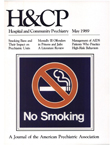Security Safeguards in Community Rehabilitation of Forensic Patients
Abstract
The security safeguards developed to ensure that forensic patients do not pose a threat to community residents appear to be effective. In more than 11,000 excursions made by patients into the city over a 24-month period, on only one occasion was a crime committed, when a patient in the community returned to the institute and sexually assaulted a female staff member.
In the seven-year history of CPS, no patient misadventure in the community has resulted in criminal charges. During the same period, the recidivism rate for patients committed to the unit after being found not guilty by reason of insanity was 10 percent, while the recidivism rate for patients committed for sex crimes was 36 percent. CPS staff believe the Madison community is at minimal risk from patients who have earned the responsibility of regular contact with agencies in the city. However, they speculate that selected institute staff may be at risk because of patient transference issues.
Access content
To read the fulltext, please use one of the options below to sign in or purchase access.- Personal login
- Institutional Login
- Sign in via OpenAthens
- Register for access
-
Please login/register if you wish to pair your device and check access availability.
Not a subscriber?
PsychiatryOnline subscription options offer access to the DSM-5 library, books, journals, CME, and patient resources. This all-in-one virtual library provides psychiatrists and mental health professionals with key resources for diagnosis, treatment, research, and professional development.
Need more help? PsychiatryOnline Customer Service may be reached by emailing [email protected] or by calling 800-368-5777 (in the U.S.) or 703-907-7322 (outside the U.S.).



